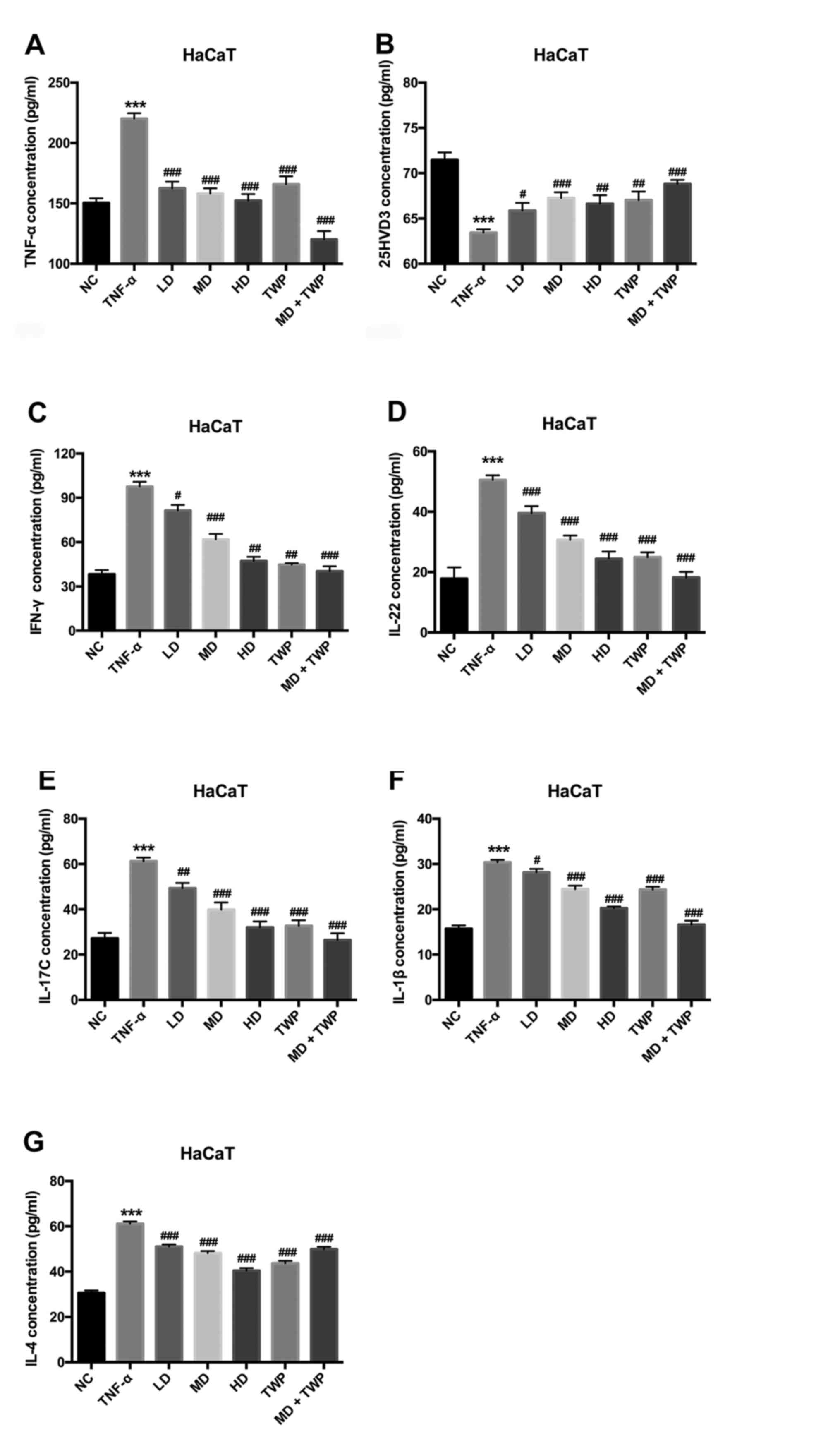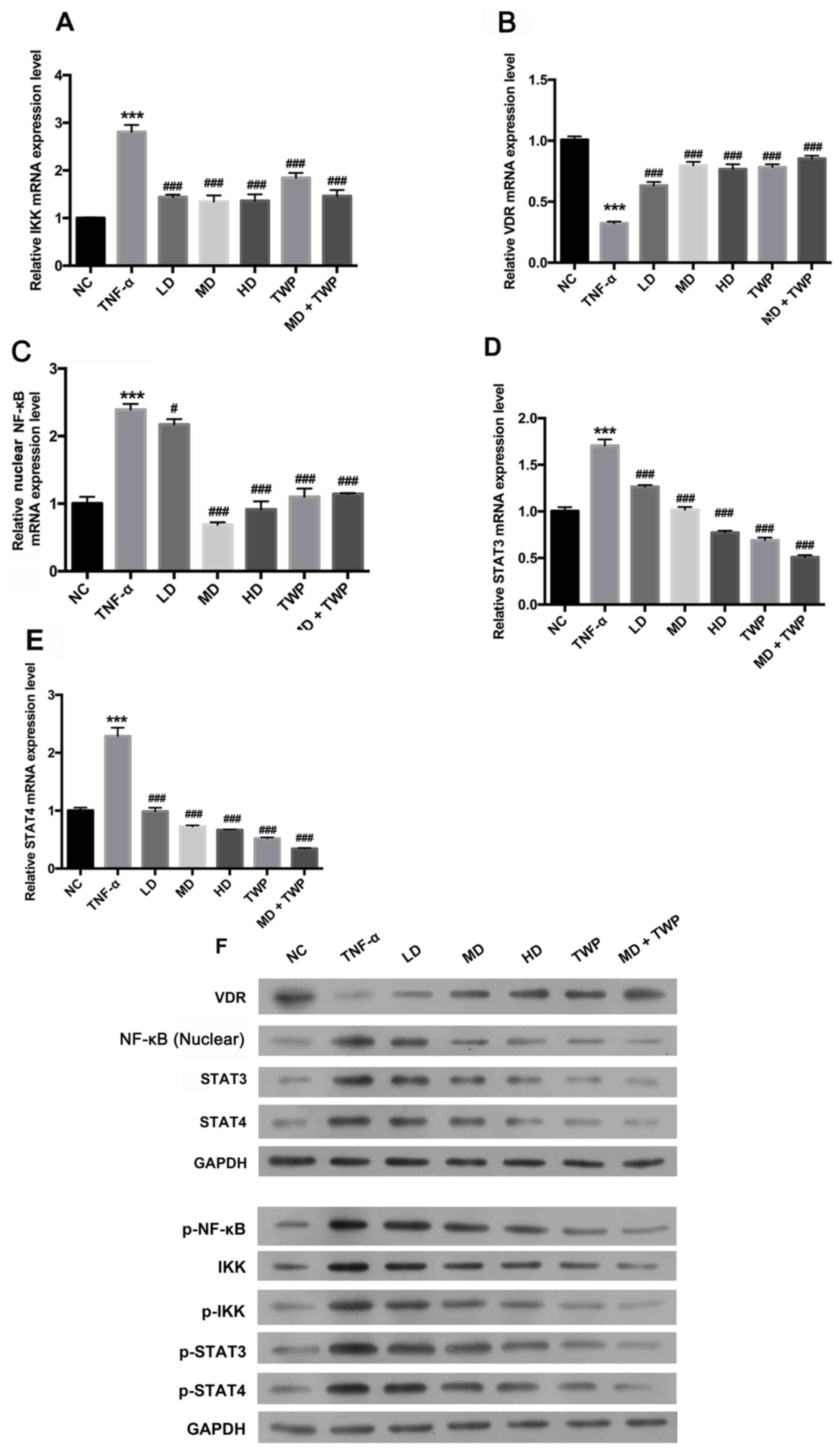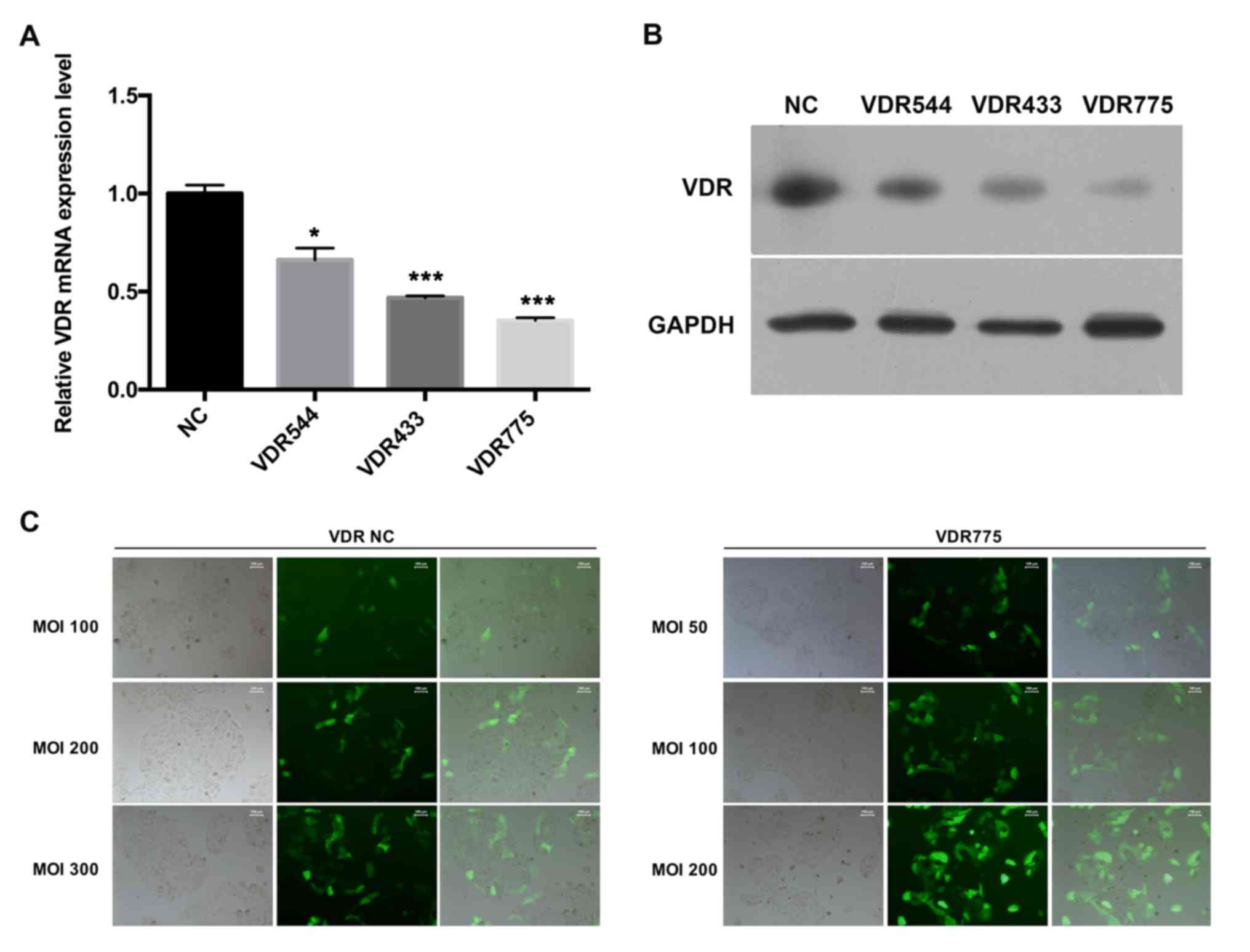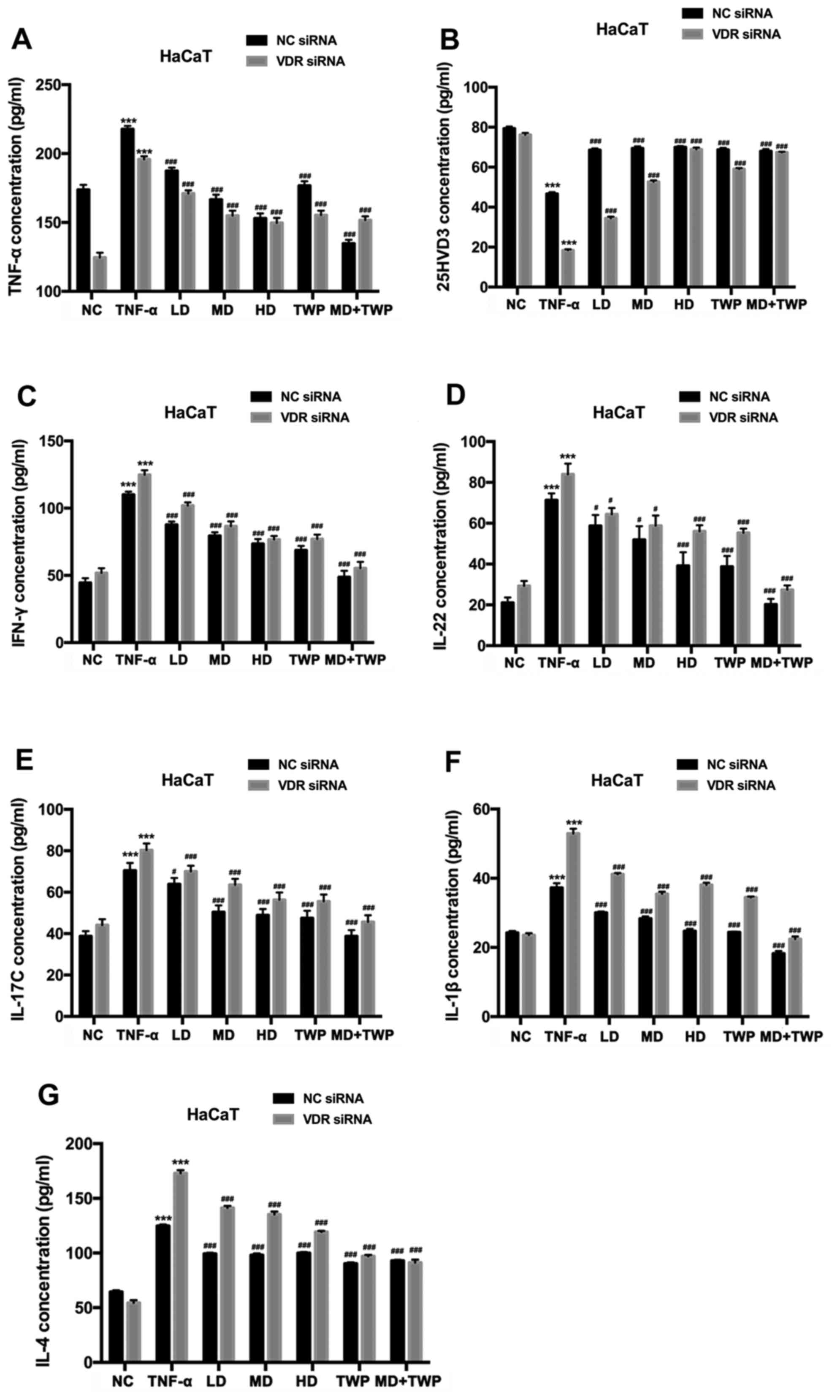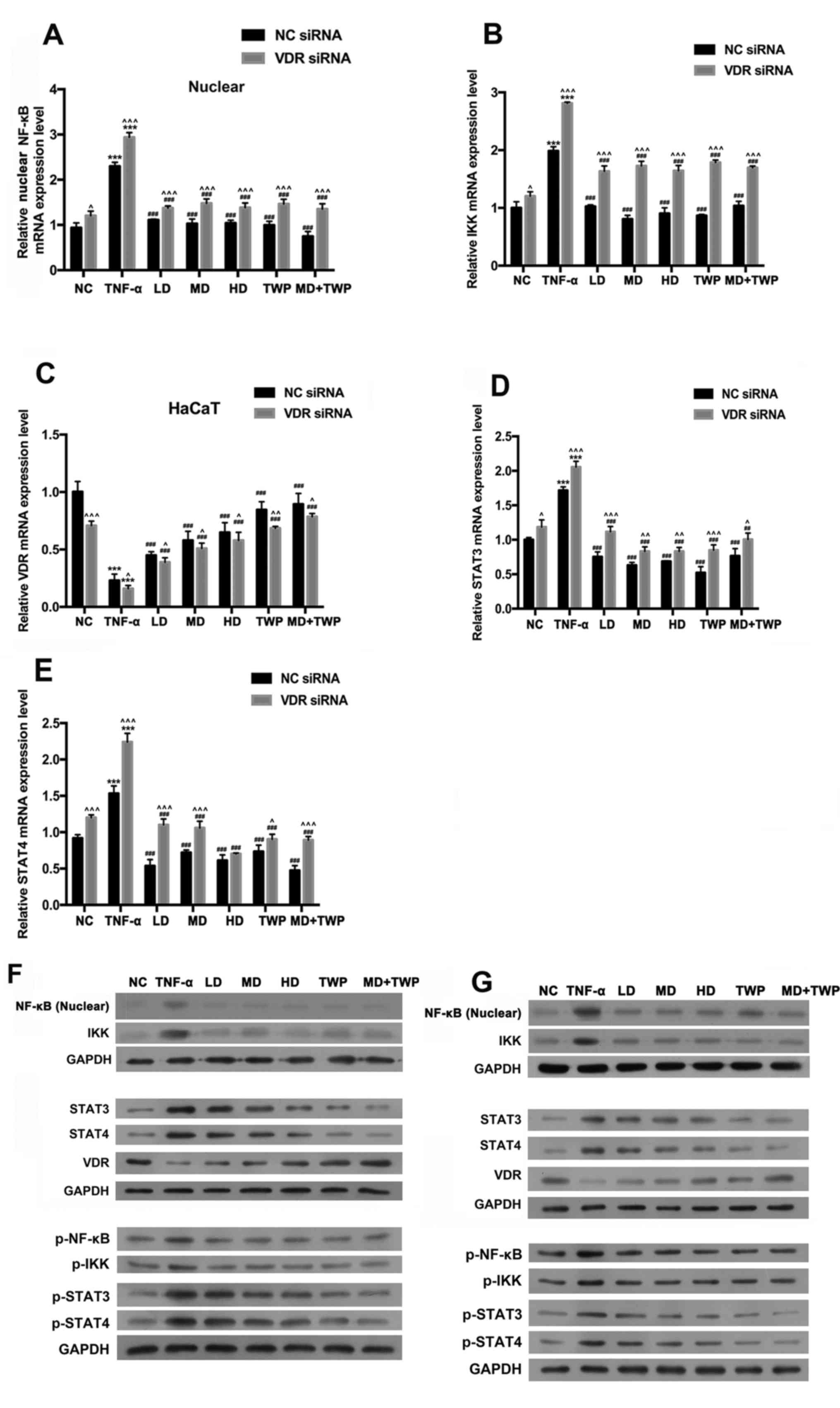|
1
|
Nickoloff BJ and Nestle FO: Recent
insights into the immunopathogenesis of psoriasis provide new
therapeutic opportunities. J Clin Invest. 113:1664–1675. 2004.
View Article : Google Scholar : PubMed/NCBI
|
|
2
|
Mak RK, Hundhausen C and Nestle FO:
Progress in understanding the immunopathogenesis of psoriasis.
Actas Dermosifiliogr. 100 Suppl 2:S2–S13. 2009. View Article : Google Scholar
|
|
3
|
Di Cesare A, Di Meglio P and Nestle FO:
The IL-23/Th17 axis in the immunopathogenesis of psoriasis. J
Invest Dermatol. 129:1339–1350. 2009. View Article : Google Scholar : PubMed/NCBI
|
|
4
|
Elder JT, Bruce AT, Gudjonsson JE,
Johnston A, Stuart PE, Tejasvi T, Voorhees JJ, Abecasis GR and Nair
RP: Molecular dissection of psoriasis: Integrating genetics and
biology. J Invest Dermatol. 130:1213–1226. 2010. View Article : Google Scholar : PubMed/NCBI
|
|
5
|
Nestle FO, Kaplan DH and Barker J:
Psoriasis. N Engl J Med. 361:496–509. 2009. View Article : Google Scholar : PubMed/NCBI
|
|
6
|
Li R, Wang J, Wang X, Zhou J, Wang M, Ma H
and Xiao S: Increased βTrCP are associated with imiquimod-induced
psoriasis-like skin inflammation in mice via NF-κB signaling
pathway. Gene. 592:164–171. 2016. View Article : Google Scholar : PubMed/NCBI
|
|
7
|
Tsuruta D: NF-kappaB links keratinocytes
and lymphocytes in the pathogenesis of psoriasis. Recent Pat
Inflamm Allergy Drug Discov. 3:40–48. 2009. View Article : Google Scholar : PubMed/NCBI
|
|
8
|
Ivanenkov YA, Balakin KV and Lavrovsky Y:
Small molecule inhibitors of NF-kB and JAK/STAT signal transduction
pathways as promising anti-inflammatory therapeutics. Mini Rev Med
Chem. 11:55–78. 2011. View Article : Google Scholar : PubMed/NCBI
|
|
9
|
Fan Y, Mao R and Yang J: NF-κB and STAT3
signaling pathways collaboratively link inflammation to cancer.
Protein Cell. 4:176–185. 2013. View Article : Google Scholar : PubMed/NCBI
|
|
10
|
Tse TW: Use of common Chinese herbs in the
treatment of psoriasis. Clin Exp Dermatol. 28:469–475. 2003.
View Article : Google Scholar : PubMed/NCBI
|
|
11
|
Lin YK, Yen HR, Wong WR, Yang SH and Pang
JH: Successful treatment of pediatric psoriasis with Indigo
naturalis composite ointment. Pediatr Dermatol. 23:507–510. 2006.
View Article : Google Scholar : PubMed/NCBI
|
|
12
|
Zhang GZ, Wang JS, Wang P, Jiang CY, Deng
BX, Li P, Zhao YM, Liu WL, Qu X, Chen WW, et al: Distribution and
development of the TCM syndromes in psoriasis vulgaris. J Tradit
Chin Med. 29:195–200. 2009. View Article : Google Scholar : PubMed/NCBI
|
|
13
|
Lu C, Deng J, Li L, Wang D and Li G:
Application of metabolomics on diagnosis and treatment of patients
with psoriasis in traditional Chinese medicine. Biochim Biophys
Acta. 1844:280–288. 2014. View Article : Google Scholar : PubMed/NCBI
|
|
14
|
Lu CJ, Yu JJ and Deng JW: Disease-syndrome
combination clinical study of psoriasis: Present status,
advantages, and prospects. Chin J Integr Med. 18:166–171. 2012.
View Article : Google Scholar : PubMed/NCBI
|
|
15
|
Yu JJ, Zhang CS, Zhang AL, May B, Xue CC
and Lu C: Add-on effect of chinese herbal medicine bath to
phototherapy for psoriasis vulgaris: A systematic review. Evid
Based Complement Alternat Med. 2013:6730782013. View Article : Google Scholar : PubMed/NCBI
|
|
16
|
Lu L, Xuan M, Yan Y, Li G, Zhou L, Wen Z
and Lu C: A statistical analysis plan for the efficiency and safety
of Chinese herbal medicine used concurrently with topical therapy
for psoriasis vulgaris. Trials. 17:4822016. View Article : Google Scholar : PubMed/NCBI
|
|
17
|
Tse WP, Che CT, Liu K and Lin ZX:
Evaluation of the anti-proliferative properties of selected
psoriasis-treating Chinese medicines on cultured HaCaT cells. J
Ethnopharmacol. 108:133–141. 2006. View Article : Google Scholar : PubMed/NCBI
|
|
18
|
Jiang L, Lai YK, Zhang JF, Chan CY, Lu G,
Lin MC, He ML, Li JC and Kung HF: Transactivation of the TIEG1
confers growth inhibition of transforming growth
factor-β-susceptible hepatocellular carcinoma cells. World J
Gastroenterol. 18:2035–2042. 2012. View Article : Google Scholar : PubMed/NCBI
|
|
19
|
Dong L, Wang F, Yin X, Chen L, Li G, Lin
F, Ni W, Wu J, Jin R and Jiang L: Overexpression of S100P promotes
colorectal cancer metastasis and decreases chemosensitivity to 5-FU
in vitro. Mol Cell Biochem. 389:257–264. 2014. View Article : Google Scholar : PubMed/NCBI
|
|
20
|
Livak KJ and Schmittgen TD: Analysis of
relative gene expression data using real-time quantitative PCR and
the 2(-Delta Delta C(T)) method. Methods. 25:402–408. 2001.
View Article : Google Scholar : PubMed/NCBI
|
|
21
|
Hara-Chikuma M, Satooka H, Watanabe S,
Honda T, Miyachi Y, Watanabe T and Verkman AS: Aquaporin-3-mediated
hydrogen peroxide transport is required for NF-κB signalling in
keratinocytes and development of psoriasis. Nat Commun. 6:74542015.
View Article : Google Scholar : PubMed/NCBI
|
|
22
|
Kim BH, Lee JM, Jung YG, Kim S and Kim TY:
Phytosphingosine derivatives ameliorate skin inflammation by
inhibiting NF-κB and JAK/STAT signaling in keratinocytes and mice.
J Invest Dermatol. 134:1023–1032. 2014. View Article : Google Scholar : PubMed/NCBI
|
|
23
|
Hansdottir S, Monick MM, Lovan N, Powers
L, Gerke A and Hunninghake GW: Vitamin D decreases respiratory
syncytial virus induction of NF-kappaB-linked chemokines and
cytokines in airway epithelium while maintaining the antiviral
state. J Immunol. 184:965–974. 2010. View Article : Google Scholar : PubMed/NCBI
|
|
24
|
Wang Q, Li H, Xie H, Fu M, Guo B, Ding Y,
Li W and Yu H: 25-Hydroxyvitamin D3 attenuates experimental
periodontitis through downregulation of TLR4 and JAK1/STAT3
signaling in diabetic mice. J Steroid Biochem Mol Biol. 135:43–50.
2013. View Article : Google Scholar : PubMed/NCBI
|
|
25
|
Dhawan P, Peng X, Sutton AL, MacDonald PN,
Croniger CM, Trautwein C, Centrella M, McCarthy TL and Christakos
S: Functional cooperation between CCAAT/enhancer-binding proteins
and the vitamin D receptor in regulation of 25-hydroxyvitamin D3
24-hydroxylase. Mol Cell Biol. 25:472–487. 2005. View Article : Google Scholar : PubMed/NCBI
|
|
26
|
Aggarwal BB, Shishodia S, Takada Y,
Jackson-Bernitsas D, Ahn KS, Sethi G and Ichikawa H: TNF blockade:
An inflammatory issue. Ernst Schering Res Found Workshop. 161–186.
2006.PubMed/NCBI
|
|
27
|
Rozieres A, Hennino A and Nicolas JF: TNF
alpha in the physiopathology of psoriasis. Ann Dermatol Venereol.
133:174–180. 2006.(In French). View Article : Google Scholar : PubMed/NCBI
|
|
28
|
Weng SW, Chen BC, Wang YC, Liu CK, Sun MF,
Chang CM, Lin JG and Yen HR: Traditional Chinese medicine use among
patients with psoriasis in Taiwan: A Nationwide population-based
study. Evid Based Complement Alternat Med. 2016:31641052016.
View Article : Google Scholar : PubMed/NCBI
|
|
29
|
Cho JW, Lee KS and Kim CW: Curcumin
attenuates the expression of IL-1beta, IL-6, and TNF-alpha as well
as cyclin E in TNF-alpha-treated HaCaT cells; NF-kappaB and MAPKs
as potential upstream targets. Int J Mol Med. 19:469–474.
2007.PubMed/NCBI
|
|
30
|
Cassano N, Loconsole F, Coviello C and
Vena GA: Infliximab in recalcitrant severe atopic eczema associated
with contact allergy. Int J Immunopathol Pharmacol. 19:237–240.
2006. View Article : Google Scholar : PubMed/NCBI
|
|
31
|
Piérard-Franchimont C and Piérard GE:
Etanercept (Enbrel) for the treatment of moderate to severe plaque
type psoriasis. Rev Med Liege. 61:201–205. 2006.(In French).
PubMed/NCBI
|
|
32
|
Ritchlin C, Haas-Smith SA, Hicks D,
Cappuccio J, Osterland CK and Looney RJ: Patterns of cytokine
production in psoriatic synovium. J Rheumatol. 25:1544–1552.
1998.PubMed/NCBI
|
|
33
|
Teschke R, Larrey D, Melchart D and Danan
G: Traditional Chinese Medicine (TCM) and Herbal Hepatotoxicity:
RUCAM and the role of novel diagnostic biomarkers such as
MicroRNAs. Medicines (Basel). 3:pii: E18. 2016.PubMed/NCBI
|
|
34
|
Xutian S, Zhang J and Louise W: New
exploration and understanding of traditional Chinese medicine. Am J
Chin Med. 37:411–426. 2009. View Article : Google Scholar : PubMed/NCBI
|
|
35
|
Huang CY, Lai WY, Sun MF, Lin CC, Chen BC,
Lin HJ, Chang CM, Yang CH, Huang KC and Yen HR: Prescription
patterns of traditional Chinese medicine for peptic ulcer disease
in Taiwan: A nationwide population-based study. J Ethnopharmacol.
176:311–320. 2015. View Article : Google Scholar : PubMed/NCBI
|
|
36
|
Xuan ML, Lu CJ, Han L and Xiang Y:
Circulating levels of inflammatory cytokines in patients with
psoriasis vulgaris of different Chinese medicine syndromes. Chin J
Integr Med. 21:108–114. 2015. View Article : Google Scholar : PubMed/NCBI
|
|
37
|
Landis ET, Davis SA, Feldman SR and Taylor
S: Complementary and alternative medicine use in dermatology in the
United States. J Altern Complement Med. 20:392–398. 2014.
View Article : Google Scholar : PubMed/NCBI
|
|
38
|
May BH, Zhang AL, Zhou W, Lu CJ, Deng S
and Xue CC: Oral herbal medicines for psoriasis: A review of
clinical studies. Chin J Integr Med. 18:172–178. 2012. View Article : Google Scholar : PubMed/NCBI
|
|
39
|
Lu CJ, Xiang Y, Xie XL, Xuan ML and He ZH:
A randomized controlled single-blind clinical trial on 84
outpatients with psoriasis vulgaris by auricular therapy combined
with optimized Yinxieling Formula. Chin J Integr Med. 18:186–191.
2012. View Article : Google Scholar : PubMed/NCBI
|
|
40
|
Wu Y and Zhou BP:
TNF-alpha/NF-kappaB/Snail pathway in cancer cell migration and
invasion. Br J Cancer. 102:639–644. 2010. View Article : Google Scholar : PubMed/NCBI
|
|
41
|
Acharyya S, Villalta SA, Bakkar N,
Bupha-Intr T, Janssen PM, Carathers M, Li ZW, Beg AA, Ghosh S,
Sahenk Z, et al: Interplay of IKK/NF-kappaB signaling in
macrophages and myofibers promotes muscle degeneration in Duchenne
muscular dystrophy. J Clin Invest. 117:889–901. 2007. View Article : Google Scholar : PubMed/NCBI
|
|
42
|
Greten FR and Karin M: The IKK/NF-kappaB
activation pathway-a target for prevention and treatment of cancer.
Cancer Lett. 206:193–199. 2004. View Article : Google Scholar : PubMed/NCBI
|
|
43
|
Grivennikov SI and Karin M: Dangerous
liaisons: STAT3 and NF-kappaB collaboration and crosstalk in
cancer. Cytokine Growth Factor Rev. 21:11–19. 2010. View Article : Google Scholar : PubMed/NCBI
|
|
44
|
Ma D, Zhang RN, Wen Y, Yin WN, Bai D,
Zheng GY, Li JS, Zheng B and Wen JK: 1, 25(OH)2D3-induced
interaction of vitamin D receptor with p50 subunit of NF-κB
suppresses the interaction between KLF5 and p50, contributing to
inhibition of LPS-induced macrophage proliferation. Biochem Biophys
Res Commun. 482:366–374. 2017. View Article : Google Scholar : PubMed/NCBI
|
|
45
|
Fekrmandi F, Wang TT and White JH: The
hormone-bound vitamin D receptor enhances the FBW7-dependent
turnover of NF-κB subunits. Sci Rep. 5:130022015. View Article : Google Scholar : PubMed/NCBI
|















